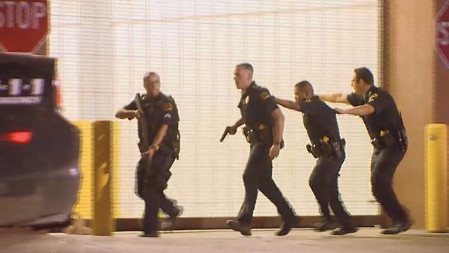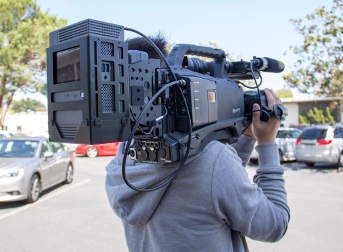TVU Packs Broadcast Dallas Shootings Live
DALLAS—On site to cover the Black Lives Matter protest march on July 7, reporters from Tegna’s news station in Dallas, WFAA, soon found themselves in middle of the sniper fire that would take the lives of five police officers. The reporters were able to broadcast the events live across other Tegna stations around the country thanks in part to TVU Network’s TVU transmitters and receivers. The station used its TVU gear to deliver 11 straight hours of coverage on the shooting.

WFAA was able to share the entirety of its coverage due to its TVU Grid, an IP-based live video distribution, routing and switching system that let WFAA switch its live video and share streams to all other Tegna stations like in Seattle, Cleveland, Denver and Washington D.C.
In addition to the TVU transmitters, receivers and grid, WFAA utilized TVU’s IS+ (Inverse StatMux Plus), a proprietary algorithm for transmission. According to William Fesh, WFAA’s news operation manager, the IS+ was a big factor in the station’s ability to deliver high-quality, low latency images during the event.
Per Fesh, WFAA switched over to TVU products around the time that he joined the station a little more than a year-and-a-half ago, and the difference was quickly noticeable. “Once we started changing the culture of how to use these packs and to take advantage of them, things overnight got tremendously better,” he said. With the TVU technology, Fesh says the station has a 98 percent success rate with the video quality.

The TVU gear also allowed for the unique and immersive perspective that WFAA provided from the field, which would not have been possible with just a few years ago by using a microwave truck.
“There were a lot of times that we were seeing pictures that were being taken, you may not have seen where the shooting was coming from but you were seeing other people who were in the same situation; who were right there with you hiding behind cars, hiding behind trees, laying on the ground covering their family members because it was all they could do,” Fesh explained. “In the past you may have had that, but you may have only had that on your camera. You wouldn’t have been able to share that with anybody until you had the opportunity to get to a place to share, or you would have had to been extremely lucky to be tethered to a microwave truck to be able to share those pictures at that moment.”
In recent weeks, other Tegna stations used its TVU equipment to similar effect, covering events live like the Republican National Convention, the Baton Rouge, La., shootings, and the Pulse night club shooting in Orlando, Fla.
The professional video industry's #1 source for news, trends and product and tech information. Sign up below.
“I really believe that for news coverage, for broadcasting, for the web and for everything as we move forward in sharing information that these technologies allow the same delivery as a microwave platform or a satellite truck, but they’re allowing you to have more flexibility on where and when you deliver it,” said Fesh.
